Four years ago, I could not describe the structure or mechanism of the human heart. Now, that magical and miraculous pump that provides the essence of life is something I think about every day. What an amazing odyssey it has been!
This post is not enough to do justice to the complexity of the topic of congenital heart disease (CHD). Every child’s anatomy, even within the same family of defects, will be uniquely their own. There is a wide range of severity within this particular medical need. From routine defects that self heal and those that, once repaired, will never be an issue again, to highly complex clusters of defects that cannot be repaired but may be palliated. Then there are the situations when a child’s CHD has become inoperable, necessitating cardiac transplant. And in some cases, even transplant may not be an option.
In 2010, my husband and I decided to adopt through China’s medical needs program and we added a son to our family of two daughters, one of whom we had adopted from China three years prior and another who came to us through birth. Having been inspired by my two friends who were born with Cystic Fibrosis, my husband and I felt a pull towards the special needs program. We were drawn to congenital heart disease after having gotten to know a little girl, adopted from China at the age of 8 with complex single ventricle CHD, who had lived with the same foster family as our daughter. We had watched as her family loved her and advocated for her through multiple difficult surgeries and recoveries.
With our first CHD adoption, we tentatively tested the waters and accepted the referral of our son who was born with a large ventricular septal defect (VSD) and moderate atrial septal defect (ASD). Although we felt prepared to support a child through an open heart surgery, the idea of complex heart disease, of an ongoing medical need, or one that might shorten his life, was more than we felt ready to take on. Shortly after, we learned that he had already undergone his full repair. However, upon arrival home, he was diagnosed with secondary pulmonary hypertension (PH), a disease of the pulmonary vasculature that is caused when certain types of cardiac defects go unrepaired for too long.
That is when our world was rocked to its core, and we faced some of the scenarios that we had feared.
Ventricular Septal Defect
Atrial Septal Defect
Pulmonary Hypertension
Fortunately, Tristan has responded very well to treatment and the child that we were told might live to be nine or ten years old is growing, thriving, and living life with his disease well managed. There is something quite empowering when forced to face our fears, and once the eye of the storm had passed, we felt stronger and our awakening continued. We had learned how to navigate our medical insurance, we had overcome financial obstacles, and most of all, we had realized that when push comes to shove, situations that seemed insurmountable when looking at an agency’s Medical Conditions Checklist were anything but. It was our privilege to do whatever was needed for our child! Had we known his diagnosis prior to his adoption, I fear that we would have been too timid to proceed. How grateful we are that were ignorant to it, for otherwise we may have missed out on our precious boy!
One year later, we adopted another son. Braver, we asked our agency to match us with a waiting child with unrepaired, complex CHD. We proceeded with this adoption with a different set of eyes. We were no longer looking for a child that was right for our family, a child that would fit into our lifestyle, our emotional boundaries. Instead, we knew that we were capable of changing, of being challenged and stretched, and it was our desire to become the right family for a child that had been waiting for one.
Bryce’s CHD was far trickier than Tristan’s and consisted of Double Outlet Right Ventricle, Transposition of the Great Arteries, and Pulmonary Stenosis. He was our first experience with a cyanotic child, which means that his particular cardiac defects caused his blood to be undersaturated with oxygen. A healthy person’s blood oxygen saturation is usually between 97-100%, but Bryce’s was in the mid-60’s.
We had no idea whether he would be operable or not, as he had been diagnosed with Pulmonary Hypertension in China.
Double Outlet Right Ventricule
Transposition of the Great Arteries
Pulmonary Stenosis
We learned to manage Bryce’s enteral feedings and began his cardiac testing which consisted of echocardiograms, a cardiac MRI, and heart catheterization. Bryce, like many children with complex CHD, had difficulty feeding and he came home too malnourished for surgery. He was fed via nasal-gastric tube and then gastronomy tube for four months in order to gain enough weight for surgery. During this time, we also worked with our hospital’s feeding clinic to help him learn to chew and swallow properly.
Fortunately, the heart catheterization showed that Bryce did not have PH, and our cardiology team conferenced and came up with a surgical plan for him. Actually, they came up with two plans: a repair that, while technically easier and less risky, had a poorer long-term prognosis; and a newer, highly complex procedure that would give Bryce a near-normal cardiac anatomy. After much research and prayer, we opted for the more difficult surgery and our surgeon set out to either find a surgeon experienced in the procedure to come to us, or we would be sent to him/her. It was during this time that we learned how specialized surgeons can be within an already specialized field, and how imperative it is to seek out multiple opinions and to build a trusting relationship with your child’s team.
Sending our child into open heart surgery was a frightening experience and we once again found ourselves in unfamiliar territory, climbing another mountain without knowing what we would see once reaching the summit. Along with the trepidation came an incredible peace. It felt so odd to be experiencing both concurrently. It is the peace that comes with letting go and embracing the time we have been given with our child without any expectation of a tomorrow.
The following year, we fell in love with a little girl on an agency’s waiting child photo listing. She had been there for many months and although we hadn’t planned on adding to our family again so soon, we just couldn’t let her go. We named her Scarlett, and she would be our first experience with the world of palliative CHD. Her diagnosis, which wasn’t fully known until her arrival home and subsequent imaging (although we did know her CHD was in the realm of single ventricle anatomy) was very complex and severe: Hypoplastic Left Heart Syndrome, Transposition of the Great Arteries, Severe Pulmonary Stenosis, Total Anomolous Pulmonary Venous Return, and multiple other cardiac defects.
Scarlett was so cyanotic, so blue, with 02 saturation readings ranging from the mid-20s to mid-50s. She was also incredibly tiny. At 26 months of age, she weighed 11.5 pounds and resembled a six to eight month old infant. Were it not for her mouthful of teeth and two year molars breaking through, we would never have believed that she was over two years old.
Upon arrival home and after her cardiac work-up, Scarlett underwent the first of her two stage single ventricle palliation: the Bi-Directional Glenn. Single ventricle heart disease cannot be repaired, only palliated. Although there are a few institutions that still use the term “repair” when speaking of the Glenn and its follow-up surgery, the Fontan, it is falling out of favor since it gives parents a false impression of the child’s anatomy and prognosis.
Even though we knew going into her adoption that children with single ventricle CHD can be very medically fragile, that many will have a significantly shortened lifespan and we had accepted that risk, we grieved as we came to know and love her more and more. And yet again, it became an exercise in handing it over to God and doing our best to relish and treasure every blessed day.
Scarlett is significantly delayed, and at her current age of almost 48 months, she is assessed at the developmental level of an 18-24 month old. All of her genetic testing has come back normal, and her physicians’ best guesses are that she suffered from hypoxia induced neurological damage. To us, she is perfect. She is our daughter, our “Nugget,” and she lights up our world and brings joy to everyone she meets!
And then came Rini. Assigned to me by my agency as an advocacy child, I became intensely attached to her over the four months that I worked on her behalf. My husband and I decided to adopt her after her health began a rapid decline and despite over four dozen inquiries, no other family had chosen to pursue her adoption.
Born with complex single ventricle CHD consisting of Double Inlet Left Ventricle, Transposition of the Great Arteries, and severe Pulmonary Stenosis, Rini also had very severe av valve dysfunction.
From application to travel took us 3.5 months with medical expedites, and just two weeks before departing from China we learned that she had spent nearly two months hospitalized in severe heart failure. Our agency had to fight for the adoption to be permitted to take place and we were cleared to depart for China when she was discharged. But once there, we learned that she was back in the hospital. We were taken to meet her, and given many opportunities to back out of the adoption.
That simply was not an option for us. She was our daughter, come what may. If she died, it would be as a beloved daughter, sister, granddaughter, and niece. But that evening, we learned that her adoption had been blocked once again. Our devoted agency moved mountains over the next few days, and we were finally permitted to welcome her into our family.
A week and a half later, we arrived in the U.S. and Rini was admitted directly into the hospital from the airport.
There is so much I could write about all that transpired over the next six months. We learned she was inoperable and at end stage cardiac disease. We prayed, met with Hospice, talked to endlessly to doctor after doctor, and sought out the counsel of families that had walked this path before us. Her ventricular function was so poor that at times, her peripheral pulses could not be detected.
She was denied transplant evaluation by several centers because of her severe malnutrition until the heart failure and transplant teams at Seattle Children’s Hospital took a chance on her. We were transported via Life Flight in mid-October. One week later after the evaluation was complete, she was accepted as a high risk candidate for transplant and listed. On that same day, she had gone into respiratory failure and was intubated. Ten days later, she suffered her first cardiac arrest. Two days later, her second. Less than thirty minutes later, she was on ECMO life support. Given that the national average wait for a donor heart was 3-5 months for children like her who were listed at the most critical status, we struggled to hold onto hope all the while trying to come to terms with letting her go.
I could never properly articulate the experience of sitting at the bedside of my dying child, wondering if she would be granted a second chance at life, and all the while knowing that her second chance would only come because someone else’s child had died. But through it all…through the sobs that came from a place inside of myself that I never knew existed, through the intense anxiety, through the stress of family separation, through the experience of telling our other children that their baby sister didn’t have much longer to live…we never, ever regretted our decision to bring her into our family. Not once.
After 19 days on the transplant list, Rini did receive the heart of a very special angel. And Rini’s birth heart, which had weakly and erratically kept beating, finally stopped at some point in the operating room as they transitioned her from ECMO to cardio-pulmonary by-pass. It made it all the way. The nurses later told me it gave them chills to see her little heart so still, as though it knew when it was time to let go.
Three and a half months later, she finally came home. Although a heart transplant is not a cure, we can expect that she will enjoy another 10-14 years of life if she has an uneventful post-transplant course. Some children live longer, while others have a shorter life. But the success and the miracle cannot be measured by the number of days given. They are measured by the amount of love given, the lessons learned, and the lives impacted. She has changed our lives in indescribable ways. What a gift we were given! Liberation from the mundane and senseless worries of daily life, gratitude for every sunrise, music whenever we hear our children laugh. Priceless treasures!
Four years ago, I could not describe the structure or mechanism of the human heart. Now, that magical and miraculous pump that provides the essence of life is something I think about every day. What an amazing odyssey it has been!
This post is not enough to do justice to the complexity of the topic of congenital heart disease. Every child’s anatomy, even within the same family of defects, will be uniquely their own. There is a wide range of severity within this particular medical need. From routine defects that self heal and those that, once repaired, will never be an issue again, to highly complex clusters of defects that cannot be repaired but may be palliated. Then there are the situations when a child’s CHD has become inoperable, necessitating cardiac transplant. And in some cases, even transplant may not be an option.
~Guest post by Andrea
![]()


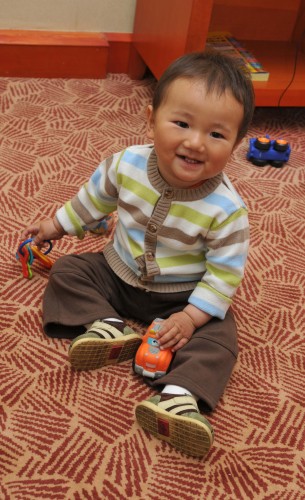
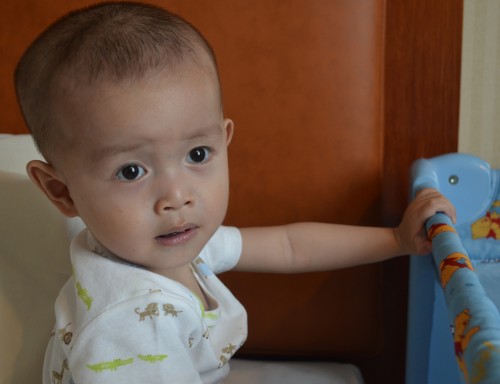
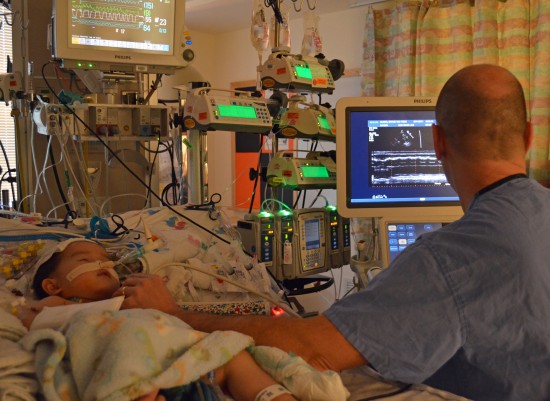
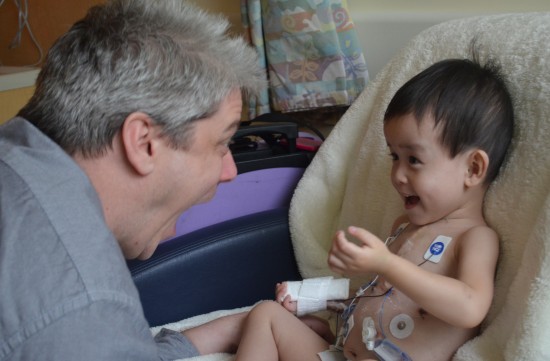
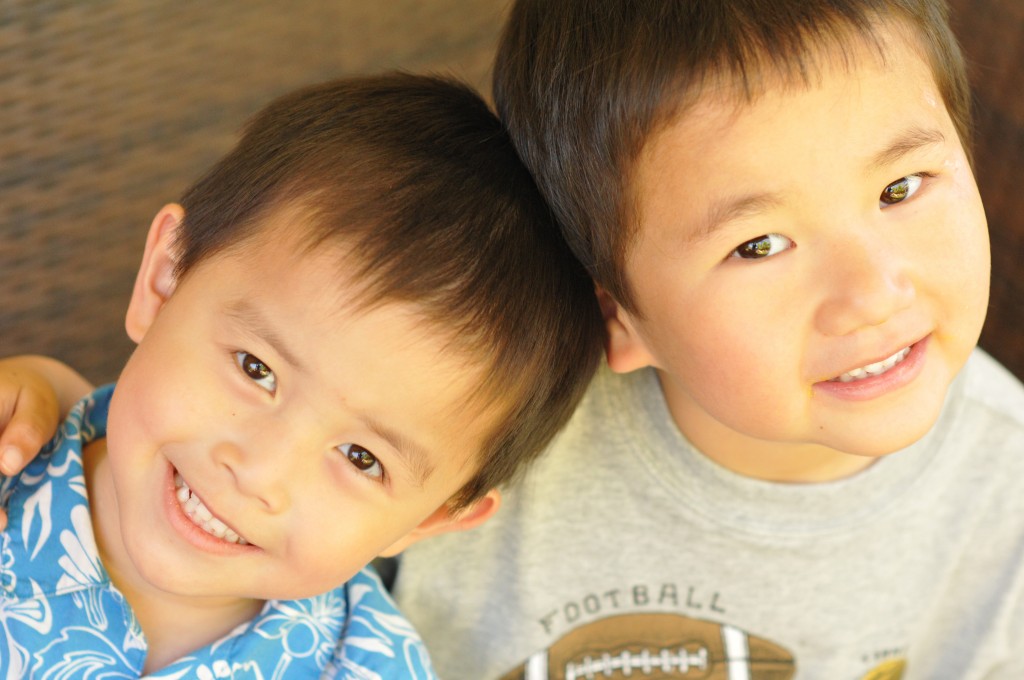
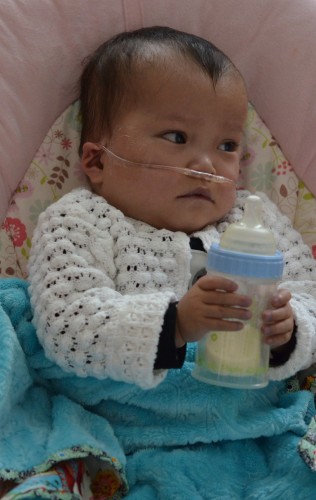
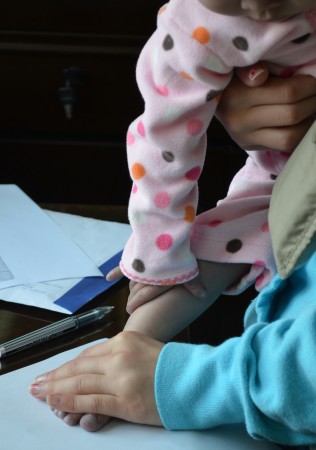
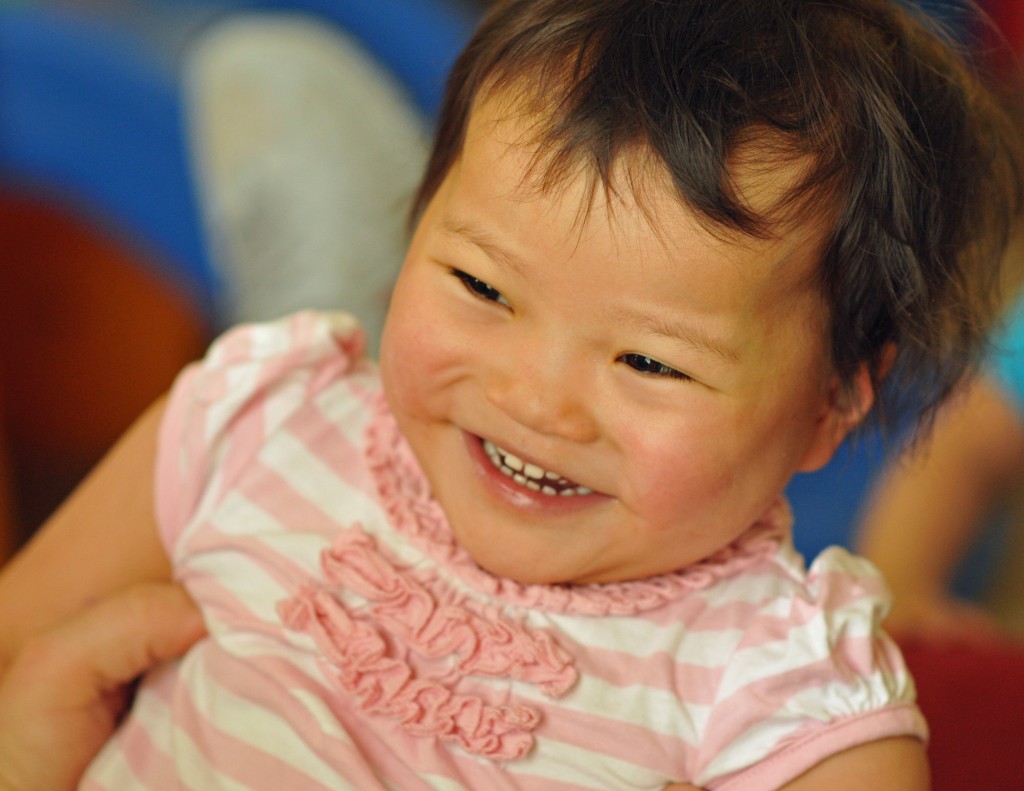
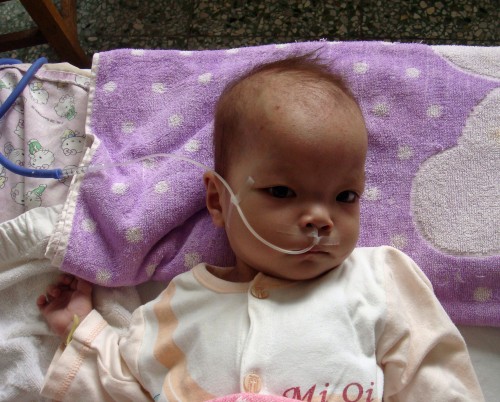
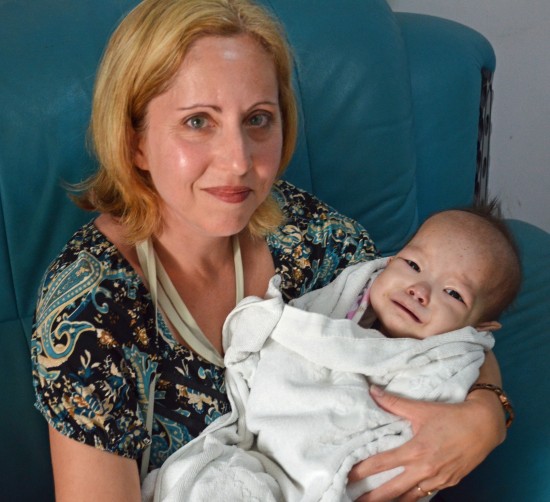
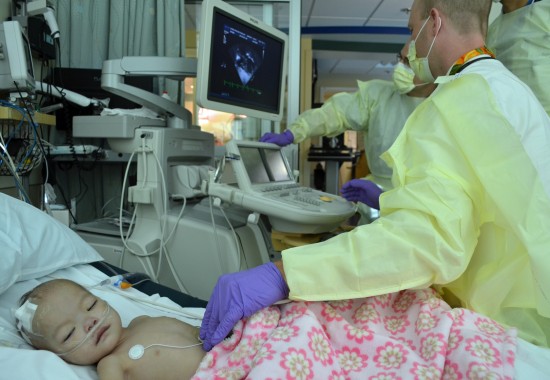
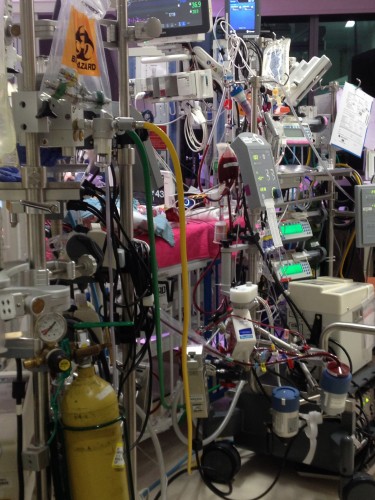
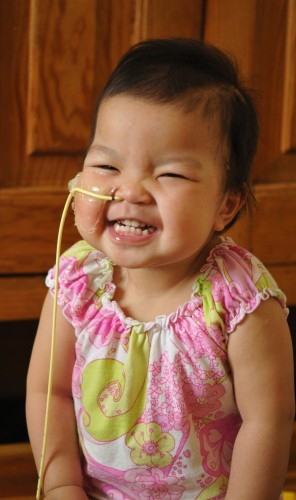
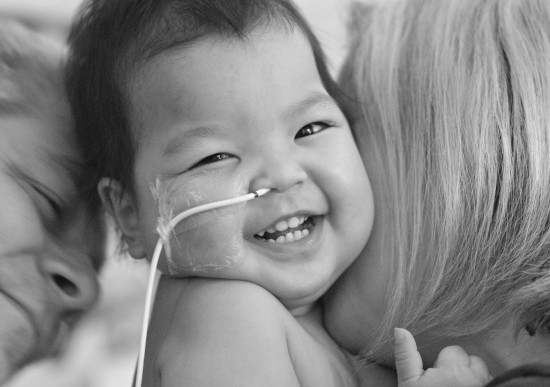























Estoy sin palabras que historia más hermosa sobre el amor incondicional de una madre.enhorabuena por tu maravillosa familia